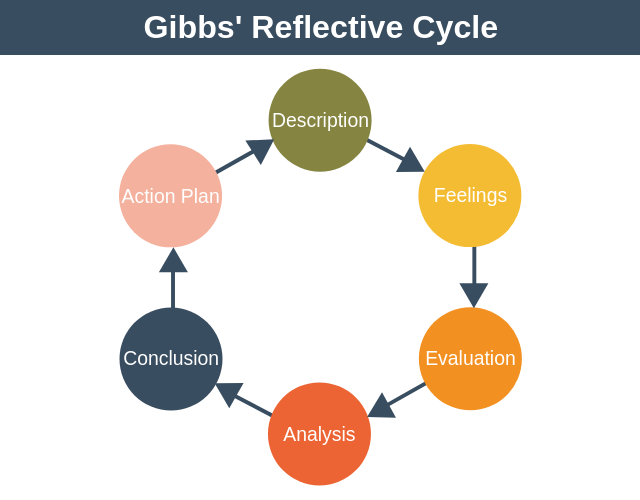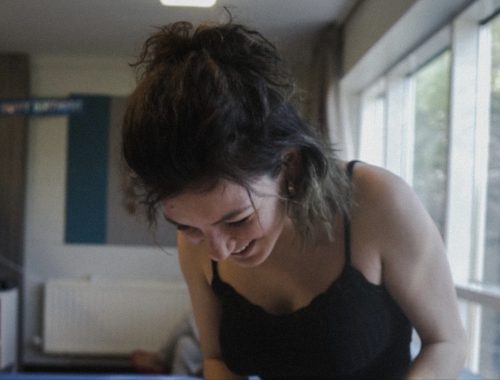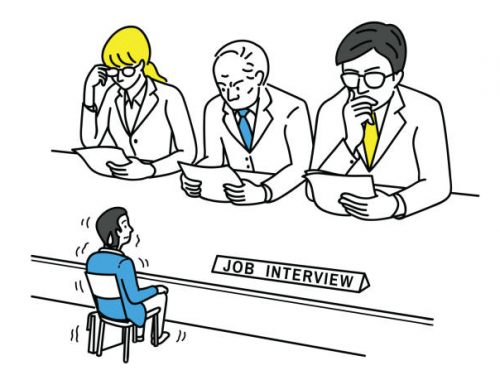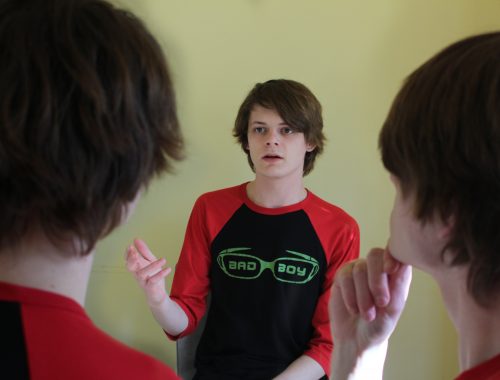Job Interviews- The Final Frontier
Interviews! What more do I need to say. I can’t say I’ve ever been put on trial but the sheer pressure you feel going into a job interview is what I imagine defending yourself against a a judge and jury must be like. It’s a stressful experience to say the least and anyone who has ever been in my shoes knows exactly what I’m talking about. So as you can imagine I was racking my brain in the week leading up to the simulated interviews as to how I could prepare differently and somehow emerge from the other side of the interrogation in one piece. Looking back on the experience with hindsight, it was very useful and I’m glad I was given the opportunity to take part in such an intimidating task. In this blog post I will be using Gibbs reflective model as a means of structuring my analysis and evaluation of the interviews as well as explaining how the exercise helped me identify existing and new work-related skills as well as improving my confidence in communicating, two of our learning outcomes for the module.

Description
For the interviews themselves we were split into groups of four and given the opportunity to interview the other three members of the group. I was the third member of the group to take to the hot seat so I had time to focus myself and gauge the type of questions being asked. I was quietly confident in my ability, however when it was my turn to leave the room for 5 minute to allow the others to read over my application, the nerves began to set in. The power shift from interviewer to interviewee was very noticeable as I reentered the room. Immediately I felt the intimidation of being judged and assessed. For the majority off the interview I was calm and collected, gathering my thoughts carefully before explaining my answers. I was successful in answering the first half of the questions in the way I had hoped to but as the interview progressed I found myself repeating some of the examples and answers I had stated previously. Ladies and gentlemen, I had brain freeze.
Feelings…
As I’ve stated, the second half of the interview through me off guard. Not in the sense that the questions were difficult to answer, but perhaps because I had not prepared enough examples to back myself up or researched the background of the company I was applying to. There were gaps in my knowledge. However, I believe my composure and confidence in part masked my lack of topics to discuss, however in a real interview scenario I don’t believe I would have been so lucky. After the interviews concluded I was pleased with how they had went overall. I had held my ground, survived and left with the mindset that I needed to develop and expand my talking points. Researching the background and history of the company was also something to keep in mind. Perhaps it was the knowledge that I knew I wasn’t applying for the real position during the simulated interviews but this will undoubtedly be something for me to keep in mind when applying for a real position.

Evaluation & Analysis
In hindsight of the interviews I have actually become far more aware of the processes and structure of job interviews and what it takes to be successful at them. Being able to assume the position of the interviewer during the exercise allowed me to appreciate what the interviewer actually wants to hear. They are ultimately on your side and want you to do well but in order for the to happen you have to be on their wavelength and explain yourself articulately and in depth. Not only did the exercise give me valuable insight into the interview process as a whole but, as a film student hoping to climb the film industry ladder post-University, it was very insightful to practice applying to a job that I’m genuinely interested in. As Georgina Gregory writes, ‘The industry has seen an increasing emphasis on what is called ‘multi-skilling’, being in possession of good IT communication, business and creative skills’ or ‘Bi-media skilling’. The film industry appears to be far more diverse than it did 20 years ago and young people hoping to make an impression must be willing to lend themselves to a variety of skills and tasks.
Action Plan
This brings us to my plan for the future. The film industry is a very cluttered and competitive industry and so in order to progress within the industry you need to prove that you are the best man for the job. I intend to take the knowledge I have gained from the simulated interviews and apply it when practicing for future interviews. I think the knowledge if knowing what the interviewer wants to hear was most beneficial for me. This has taught me to tailor my examples in my answers to the job I’m applying for rather than spontaneously thinking of random scenarios in my head, on the spot. The interviews did however reassure me of my confidence, delivery and tone when delivering my answers and Intent to maintain this professional tone for all future practices. As Melanie Jasper writes,
Emotions often interferes with the way we see things”
Jasper, Melanie, 2013, 173
I believe it is essential to go into an interview with a clear head, not cramming every little last piece of information into your brain. moments before the interview takes place. This was a strategy I found helped me remain calm and collected.

Conclusion
In conclusion, I survived! That was my goal going into the exercise and I achieved it. Everything else was a bonus. I feel more confident and prepared heading into an interview with real stakes now, with a better knowledge of what I may be asked and how to prepare for any possible question. The primary task is to practice. Whether it’s with friends or parents, this will ultimately allow me to figure out what direction to take my talking points and how to best sell myself. I can’t say I’m looking forward to my next interview (can anyone?) but I can feel safe in the knowledge that I will be ready for when the dreaded day comes.
Bibliography
Gregory, Georgina, et al. Careers in Media and Film : The Essential Guide, SAGE Publications, 2008. ProQuest Ebook Central, https://ebookcentral.proquest.com/lib/qub/detail.action?docID=420885.
Jasper, M. (2013) Beginning reflective practice. Andover: Cengage Learning EMEA
Images
[2]https://www.google.com/search?q=interviews&tbm=isch&ved=2ahUKEwio69vZr4z2AhUURuUKHaafAJoQ2-cCegQIABAA&oq=interviews&gs_lcp=CgNpbWcQAzIFCAAQgAQyBQgAEIAEMgUIABCABDIFCAAQgAQyBQgAEIAEMgUIABCABDIFCAAQgAQyBQgAEIAEMgUIABCABDIFCAAQgAQ6BwgjEO8DECc6BAgAEEM6CggjEO8DEOoCECc6CAgAEIAEELEDOggIABCxAxCDAToGCAAQChAYOgQIABAYOgsIABCABBCxAxCDAVCNDFjXOGC3OWgIcAB4AIABUYgBtQmSAQIxOJgBAKABAaoBC2d3cy13aXotaW1nsAEKwAEB&sclient=img&ei=tDMRYqjBJpSMlQemv4LQCQ&bih=742&biw=1440#imgrc=xoqqyFoaWzZsbM&imgdii=4lVOqklG3Ls4AM
[3]https://www.google.com/search?q=multi+tasking&tbm=isch&ved=2ahUKEwiTvIPAsIz2AhVIChAIHZWoB8wQ2-cCegQIABAA&oq=multi+tasking&gs_lcp=CgNpbWcQAzIFCAAQgAQyBQgAEIAEMgUIABCABDIFCAAQgAQyBQgAEIAEMgUIABCABDIFCAAQgAQyBQgAEIAEMgUIABCABDIFCAAQgAQ6BwgjEO8DECc6BAgAEEM6CggjEO8DEOoCECc6CAgAEIAEELEDOggIABCxAxCDAToLCAAQgAQQsQMQgwFQkwZY_JkHYOybB2gCcAB4AIABbogB4geSAQQxMy4xmAEAoAEBqgELZ3dzLXdpei1pbWewAQrAAQE&sclient=img&ei=izQRYtPKC8iUwPAPldGe4Aw&bih=742&biw=1440#imgrc=FCNinLgxzrgBNM
You May Also Like

Surprisingly Worthwhile
18 February 2022
Simulated Interrogation
18 February 2022
